I cannot say...
This time, I tried to bake my loaves directly in the oven (steam mode) on a steel plate (just to see what difference it would make compared to the DO)...:-)))))My bread has never ever been that flat and pathetic!!!!! Please do not hesitate to share your thoughts on this complete flop!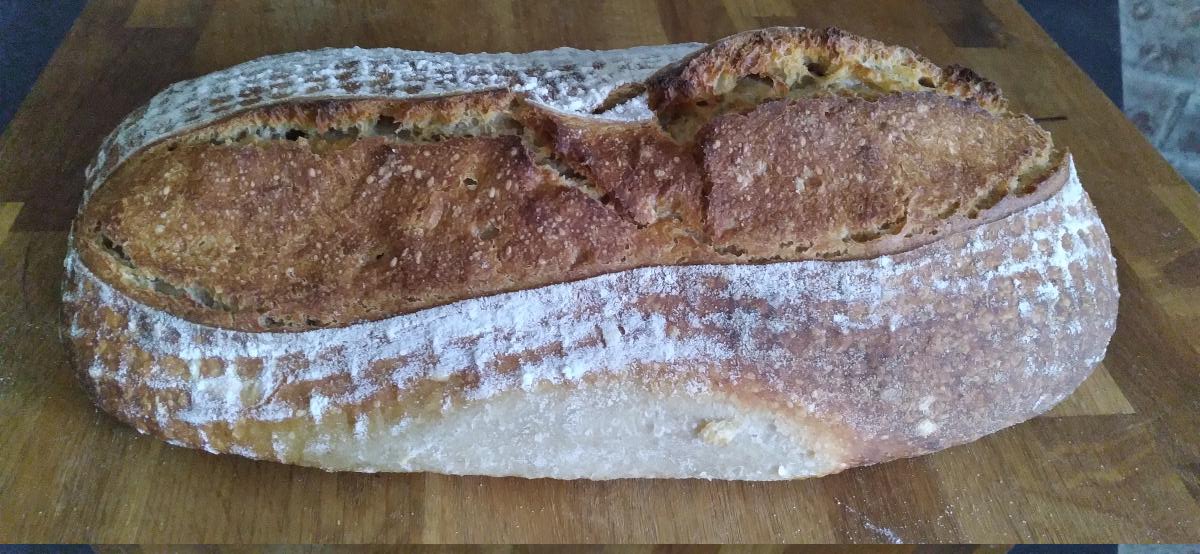
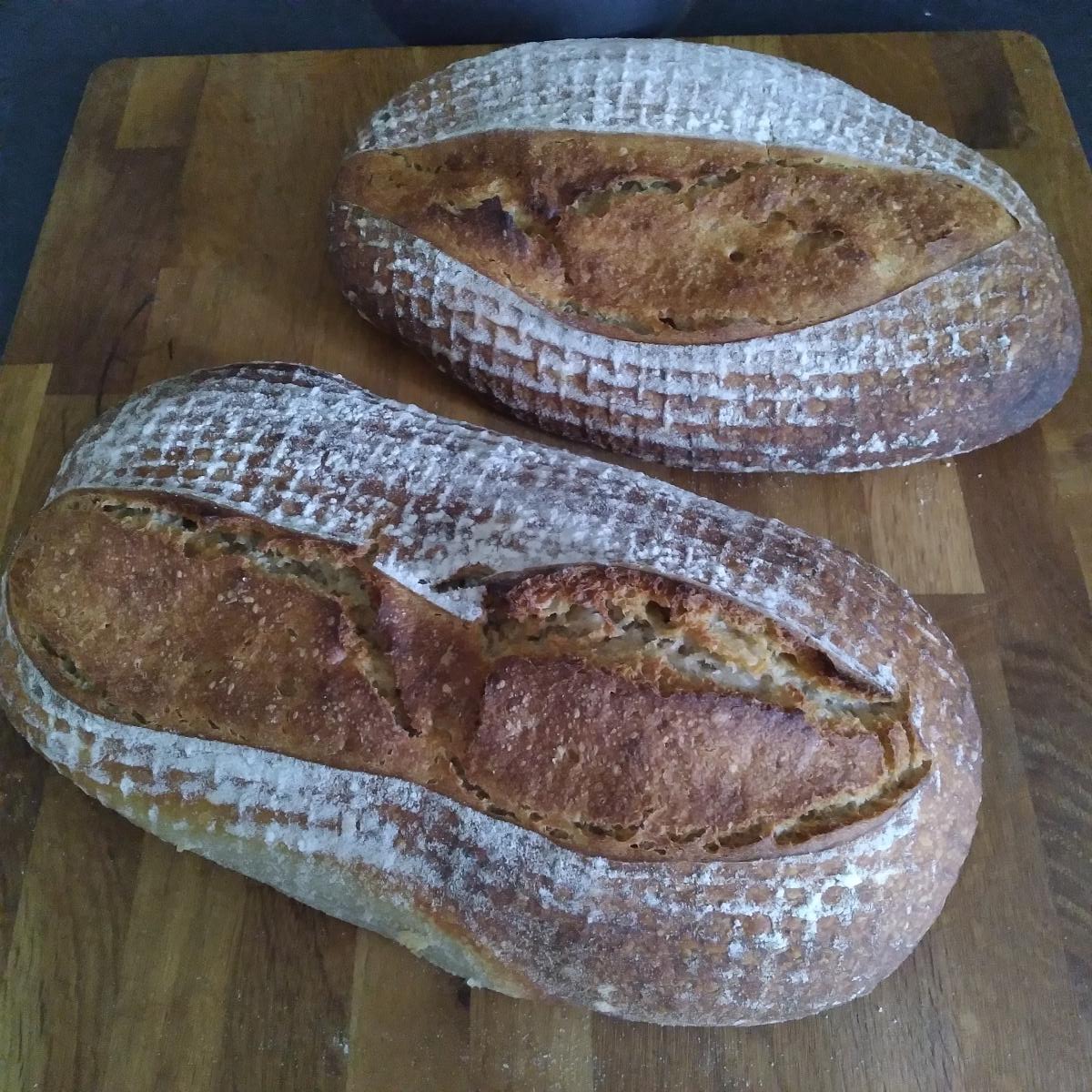
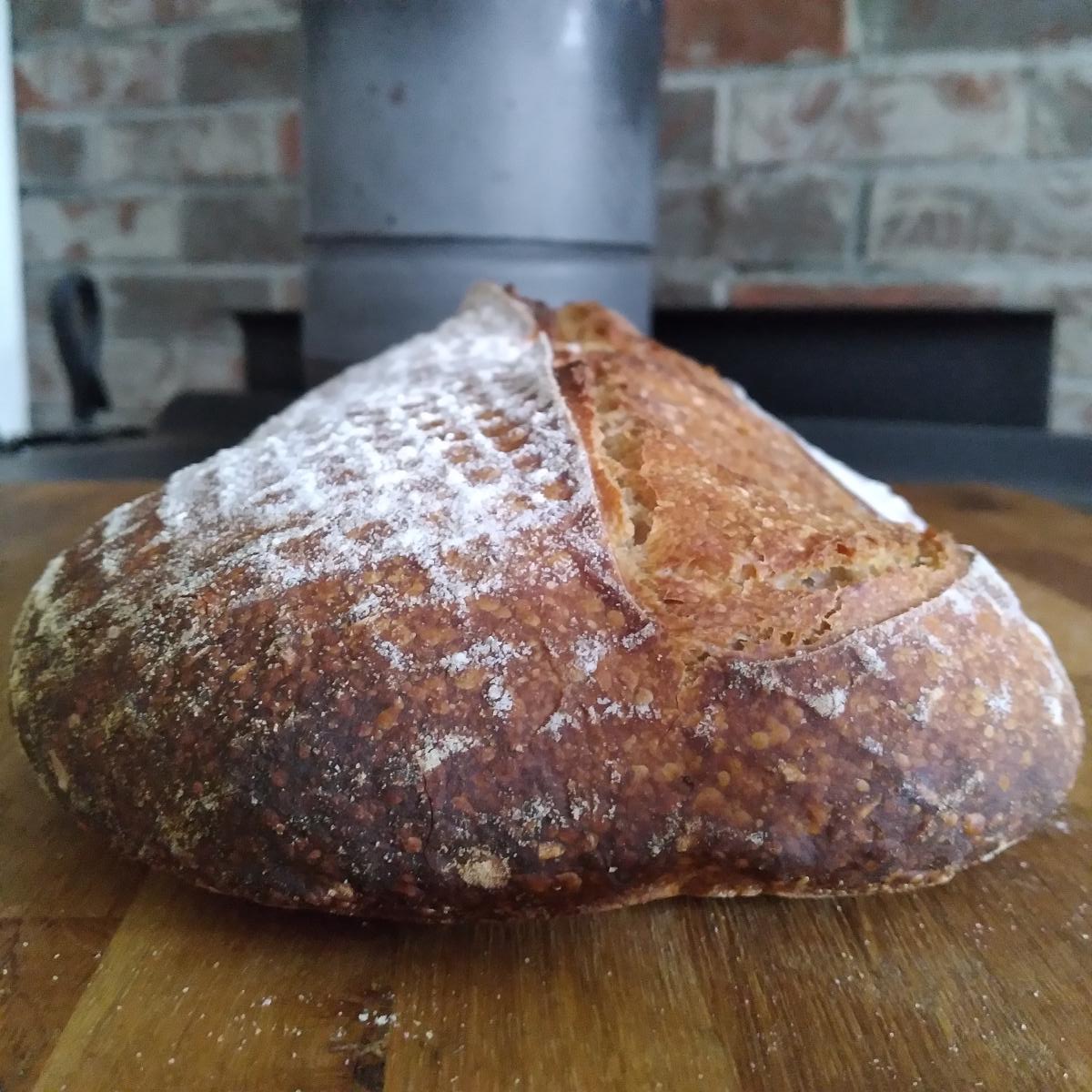
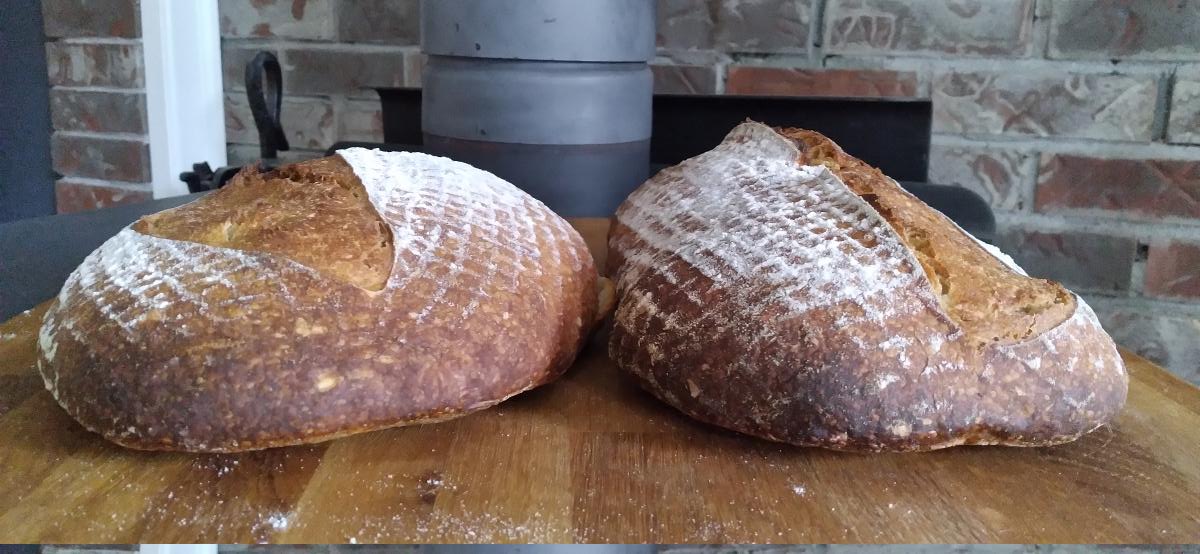
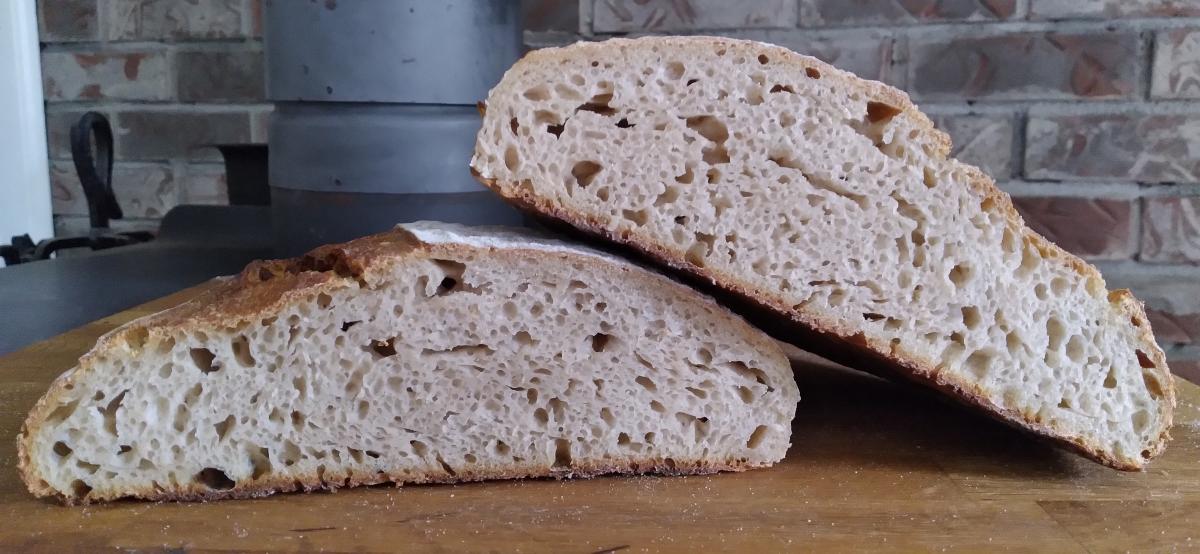
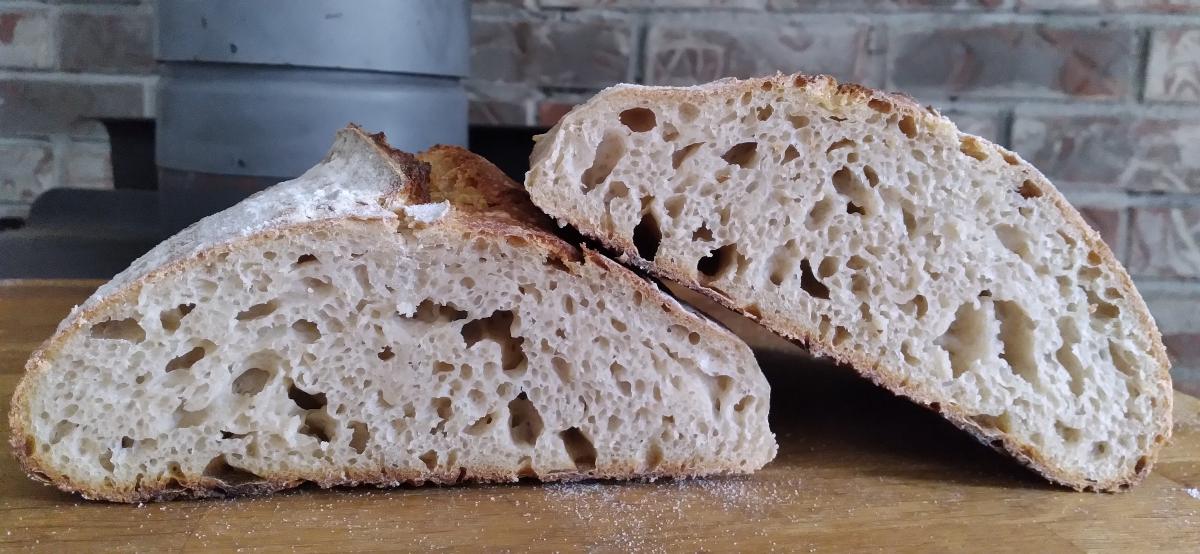 Here is my process for 2 loaves: 1kg sifted wheat flour (equivalent T80):https://lamilanaise.com/en/product/organic-sifted-wheat-50-bread-flour/ 75% hydration2.2% salt15% active whole wheat starter (overnight built at 19C; ratio 1:5:5)Fermentolyse 1h at RT 23°
Here is my process for 2 loaves: 1kg sifted wheat flour (equivalent T80):https://lamilanaise.com/en/product/organic-sifted-wheat-50-bread-flour/ 75% hydration2.2% salt15% active whole wheat starter (overnight built at 19C; ratio 1:5:5)Fermentolyse 1h at RT 23°Add salt / 12mn V3 Ankarsrum mixer
Rest 30mn / S&F
Rest 30mn / S&F
Rest 45mn / Coil fold
Rest 1h / Coil fold
Pre-shape 5h15 into bulk / rest 10mn and shape + 1h proof at 23°
Fridge overnight
Total fermentation time = 6h40 at 23-24° + 12h 3C
Just some initial thoughts and questions:
-Did you mix in mixer to full gluten development?
-What was dough like at end of bulk? Strong? Sticky? Just right?
-How much rise by end of bulk?
-How long from last fold to pre-shape? Were you happy with the quality of your final shaping?
-Did you proof in a banneton?
-Your crust doesn't look light and spotty the way it typically does if its overproofed.
-Did you change anything else about your process beside no DO?
I have never used a "steam mode" oven setting. Since that is a big difference perhaps that was the issue? I'm sorry... its so frustrating and happens to all of us!
Thank you for your questions, I actually got a new mixer a few weeks ago and am still playing with the mixing times; not sure if I have found the perfect magic formula yet...
As for the dough at the end of the bulk, it was the usual borderline-sticky-but-not-too-much kind of dough; the dough does feel very wobbly/jiggly but not strong, no. Not sure how much it rose as I do not use an aliquot jar to monitor the rise.
Around 1h30 between the last coil fold and pre-shaping
Dough proofed in banneton sprinkled with rice flour, wrapped in a plastic bag.
I did not change anything apart from the baking process, although the weather have been so erratic lately that it is really hard to anticipate how long the bulk fermentation is going to take
Thank you again for your 2 cents!
I think I'm starting to think that over-hydrating might be part of my problem...
My gut feel, based on the photos, is that the dough was too wet, and the gluten not developed enough.
The crumb looks a tad under-baked, as in not enough water was baked off. This may fix itself next time when water is reduced. Otherwise, lower the temp and bake longer so the water bakes off before bottom crust gets too dark.
And I have to add, your loaves here still look better than mine.
That is really what I am starting to think..I have been playing with hydration levels for a little while; here is my last bake at 73% hydration: I think I'm getting close to the right hydration for my flour...
The oven spring was much better (baked in a DO) and the crumb is not too bad, even if there is still room for improvement, still dense in some areas...
Maybe should I try a even lower hydration?
You could certainly try 70% but I think you're being hard on yourself. Those are very nice loaves.
Thank you Clevins, I am a bit of a perfectionist and am just trying to improve and learn from my experiences as much as possible, so even if my bread is really delicious, I am really looking at getting a better understanding at what the /dough/crumb/crust is trying to tell me, recognising and interpreting the signs :-)
I'm certainly no expert but I don't think this was a fail for 100% WW loaves. The crumb looks decent although the detail is hard to see from these photos.
To me, this looks like you may have had some scoring issues based on the very irregular lines on your loves, and, did the loaves happen to stick to the bannetons when you went to load them in the oven? The top picture shows an unusual area of white/light dough that did not brown and it looks like the loaf started to get an ear on one end and then got hung up; the loaves just seem very asymmetric in general. Just wondering if the scoring and/or any issues taking the loaves out of the bannetons may have contributed to the results.
Outside of any scoring or any possible de-basketing issues, whenever I have super flat ears, it is typically from over-fermented or over-hydrated doughs.
Interesting...I did not have any specific issues with the scoring, at least none I could notice...The usual straight line, pretty easily done out of the fridge. The dough did not stick to the banneton either...
The dough was indeed asymmetric when I took it out of the fridge, it spread on one side of the banneton that was longer that the shaped-dough...It does that every single time, that's why I tend to think that it might indeed be over-hydrated
Gaelle have you baked this same recipe exactly the same way with this exact flour before and it has turned out more to your liking?
The crumb from what I can tell in the smallish photos that get blurry as I pinch to zoom them doens’t particularly look over fermented to me. The outside looks like it was over fermented but the inside doesn’t. This makes me think like Dave that this was over hydrated.
The flour you’re using should be able to take 75% hydration I would think with over 11% protein, but it isn’t particularly strong flour based on protein alone. Is it possible that you miscalculated the water or flour to cause it to be over hydrated? And maybe since the protein isn’t super high maybe the 75% hydration is just a bit high for this flour.
Were the two loaves baked close together? Is that why there is that pale spot on the one loaf? As Leigh asked were there any issues when flipping or transferring the dough?
Benny
I now really think the hydration might be the culprit here indeed....
The 2 loaves were baked very close together, that's why they stuck to each other with led to that pale spot on the side, well spotted Benny!
I just posted above the result of my last bake, at 73% hydration..Do you think I should go even lower? The shaping was much easier , and the general feel of the dough was much stronger after pre-shaping
This bake reminds me when I was struggling with baking 100% whole red fife. That was a real challenge and I had bake after bake that were coming out flat. It was super frustrating and made me doubt myself as a baker. It wasn’t until I greatly reduced the hydration that I finally got a loaf that I was proud of. Given the improvement with you baked at 73% hydration I think that to me is a clue that the 75% hydration is just a bit too high for this flour. Of course you could add some vital wheat gluten, this would allow you to keep the 75% hydration and push fermentation a bit further by giving you a stronger dough that could handle more fermentation.
I'd rather not add any wheat gluten if I possible for the moment, I will persevere and try first to lower the hydration. I just started a new batch at 70% hydration, fingers crossed!
Thanks for your help Benito!
A whole wheat starter can be temperamental and inconsistent and while it can still look active it can lose strength. Does your levain pour like batter or hold together with some strength? The flat profile of your loaves is why I suspect your starter is not at its best. Your flour choice looks interesting as a T110 has a fairly high ash content. Is this what your starter is fed with?
There is a learning curve with all new mixers. Withholding some water at the beginning allows the gluten to develop better and then slowly add it until the dough seems right. My Bosch mixer does a good job at bassinage but I am not so sure about your Ank.
As others have mentioned it is difficult to analyze your crumb without being able to zoom in. Upload a larger file and set the width to 625 should help with that.
Your making good bread and it is not easy to do that consistently many of us are hyper critical of our efforts but that’s why we are here.
Don
Really interesting, I had not thought of that, Don! I had a whole spelt stater for a while before switching for stone ground whole wheat with a pinch of whole rye a few weeks ago as I thought that my struggles were partly due to the elasticity of the spelt...But now indeed, I realise that the hydration might be at the heart of my issues.
My levain is usually quite very inconsistent indeed and can be quite strong and holds well together one day, and very runny the next day (same feeding ratio 1:5:5 , same proofing temp 19-20C). I feed it with whole wheat stone ground flour with a pinch of whole rye, so a different flour than the one I use to make my loaves.
I use this specific flour (T110) as I was under the impression that it was quite nutritious and a good compromise between white flour (lacking of any nutrients) and whole wheat (very fibrous). I did not take the ash content into consideration though in that equation...
The flour is a nice quality flour and perhaps adjusting the hydration is the main issue. Your bulk ferment time seems a little long for the middle of the summer though. I like to make my levain with the flour I am using in the bread so that they are already acquainted so to speak. I would suggest trying that to see what happens and adding the whole wheat into the final mix. I am not aware of many TFL bakers who use a WW starter other than a Desem type (cooler ferment) version. I think Benny had a WW starter for a while but it crashed on him and he now uses a Rye starter.
Good idea to use the main flour in the levain! I'll try tomorrow
As for the flour used to feed the starter, do most of you TFL bakers use 100% whole rye flour?
Don has a good memory, but during my first and early in the second year of baking I was feeding my starter 100% whole red fife. It was generally quite good, but on two occasions it became extremely sluggish and inconsistent. Being relatively new to baking at that point I blamed myself. I was encouraged to strengthen my starter by feeding it 100% whole rye and keeping it at room temperature for a few days. It was successful both times so after the second time I decided that if whole rye feeding strengthens my starter after a few feeds, why not just switch to whole rye altogether? So that is what I did and now my starter is quite predictable and in over a year I haven’t had one slow down in its ability to build levains so my baking is more predictable.
If you’re struggling with your starter, I’d recommend trying to feed it just whole rye.
Benny
Sold!! :-)
I maintained a whole rye starter for a while last year but as I was using also whole rye to build the levain, I found that the taste of rye would be a bit too prominent, so decided to opt for a milder taste to feed my starter, whole spelt (which led to very exentible-dough issues)...Don't ask me why it never occured to me to feed my starter with my main dough flour...Mysteries of life!!! I am feeling really dummy right now ;-)))
So I don’t find I can taste the tiny bit of rye that is used to build my levains in the final bread. Even when I bake a all white flour bread like the Yorkville SD baguettes. If you’re concerned about tasting the rye, just do a higher ratio levain build and give it longer to ferment.
So does this mean that you always build your levain with whole rye?
The inoculation or seed from the starter is always rye since my starter is 100% rye. But the composition of the levain other than that seed depends on the recipe so it will be mostly whole wheat, or whole spelt or even just bread flour or a blend of the above. But there is always that little bit of rye from the starter in it.
Benny
Thank you Benny!